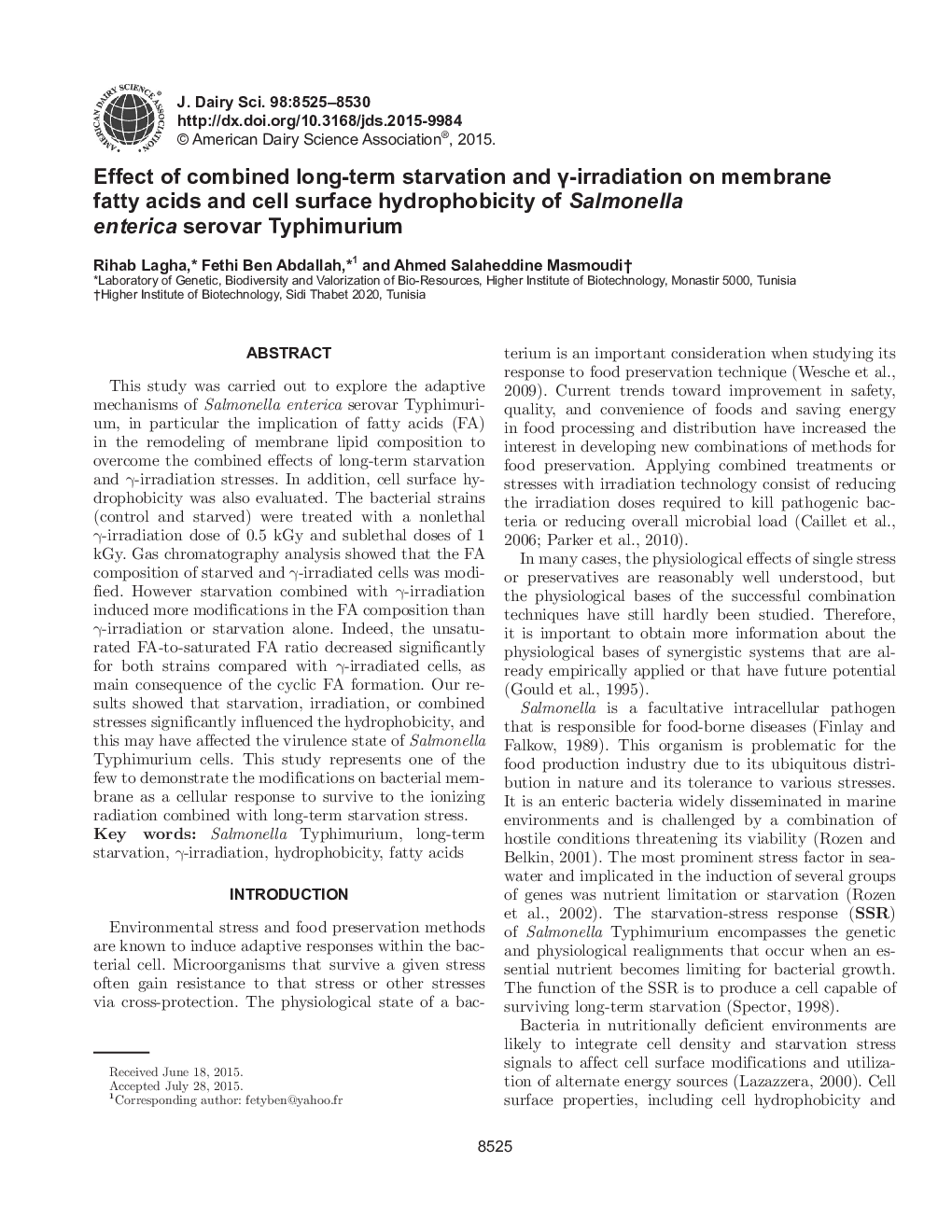| Article ID | Journal | Published Year | Pages | File Type |
|---|---|---|---|---|
| 10973389 | Journal of Dairy Science | 2015 | 6 Pages |
Abstract
This study was carried out to explore the adaptive mechanisms of Salmonella enterica serovar Typhimurium, in particular the implication of fatty acids (FA) in the remodeling of membrane lipid composition to overcome the combined effects of long-term starvation and γ-irradiation stresses. In addition, cell surface hydrophobicity was also evaluated. The bacterial strains (control and starved) were treated with a nonlethal γ-irradiation dose of 0.5 kGy and sublethal doses of 1 kGy. Gas chromatography analysis showed that the FA composition of starved and γ-irradiated cells was modified. However starvation combined with γ-irradiation induced more modifications in the FA composition than γ-irradiation or starvation alone. Indeed, the unsaturated FA-to-saturated FA ratio decreased significantly for both strains compared with γ-irradiated cells, as main consequence of the cyclic FA formation. Our results showed that starvation, irradiation, or combined stresses significantly influenced the hydrophobicity, and this may have affected the virulence state of Salmonella Typhimurium cells. This study represents one of the few to demonstrate the modifications on bacterial membrane as a cellular response to survive to the ionizing radiation combined with long-term starvation stress.
Related Topics
Life Sciences
Agricultural and Biological Sciences
Animal Science and Zoology
Authors
Rihab Lagha, Fethi Ben Abdallah, Ahmed Salaheddine Masmoudi,
